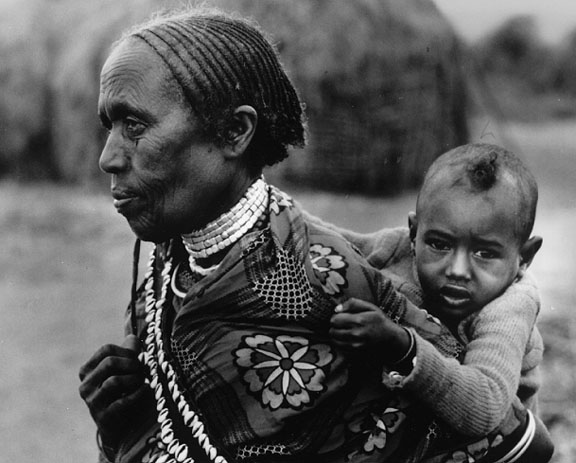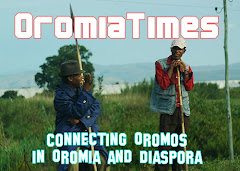| By Justin Pearce BBC News, Johannesburg |

"You aren't David the houseboy. You're Nelson Mandela."
It is a young boy who is said to have uttered these words as he confronted South Africa's most famous fugitive.
Nicholas Goldreich had seen a photo of Nelson Mandela in the news magazine Drum, and recognised the face of the man he knew as a servant in his parents' home.
At least that's how Nicholas's father, Arthur Goldreich, remembered the story, and told it to historian Garth Benneyworth.
Mr Benneyworth is now involved in a project to restore and preserve the farm buildings where the Goldreichs lived, where Mr Mandela hid out, and where several of his colleagues from the then-banned African National Congress were arrested.
Nelson Mandela himself remembers the incident differently: in his autobiography, Long Walk to Freedom, he tells how Nicholas Goldreich had seen the photo and called his mother, Hazel, to settle the dispute over the servant's identity.
Either way, Nicholas Goldreich was sworn to secrecy.
When the police raided the farm north of Johannesburg where the Goldreichs lived, it was his brother Paul who led the police on a wild goose chase, telling them "there's a bomb buried here, there's an arms cache there". ![]()

![]() We still don't believe the gun has been found yet
We still don't believe the gun has been found yet ![]()
But the police never found any weapons. Mr Mandela was absent from the farm at the time of the raid which saw his ANC colleagues arrested - the police tracked him down near Pietermaritzburg, 500 km (311 miles) away.
Today, as historians search for the one firearm that Nelson Mandela himself recalls having buried, the story of the Goldreich children and the man who posed as their father's servant is one of the many intriguing tales that have been unearthed along with the buried rubble and scrap metal.
Changes
The gun - a Makarov pistol given to Mr Mandela by an Ethiopian army officer while the South African leader was receiving military training in Addis Ababa - has proved less forthcoming.
"I still can't find it, though I've tried many places," says January Mphafa, the driver of the mechanical digger that chugs and roars around the open patch of ground behind the Liliesleaf farmhouse. 
His digger rips up a slab with slate tiles embedded in cement - this was once the floor of a house subsequently built on top of the place where the gun is thought to lie.
After the 1963 arrests, the farm property was divided and the land disappeared beneath suburban houses and gardens.
The Liliesleaf Trust, set up to redevelop the site of the ANC's former secret headquarters as a memorial and an educational facility, has bought eight properties and aims to restore the area around the main house to how it was in 1963.
The garden walls that marked out the suburban development have been knocked down, and the house that was believed to cover the buried gun was the first to be flattened when the Liliesleaf Trust got to work
Nevertheless, the changes that have taken place since 1963 have confused the efforts to find the gun.
Nelson Mandela's clearest memory of the weapon's location is that he buried it "50 paces from the kitchen". So the search began 50 paces from the kitchen of the main farmhouse.
But something about this detail didn't seem right.
"In Long Walk to Freedom, Madiba (Mr Mandela) talks about sitting in the kitchen in the afternoon sunshine. But this kitchen gets no sun," Mr Benneyworth says.
Elimination
It turned out that the kitchen where Mr Mandela had spent his afternoons was in one of the outbuildings that were later converted into a separate house, and are now being restored to their original condition. So the search moved.
The researchers also used a process of elimination to narrow down the possible sites where the gun might be. 
Not in the spot where a chicken coop stood in 1963 - the chickens would have made a noise and attracted attention.
Not in the nearby graveyard - Mr Mandela's cultural sensibilities would not have allowed that.
Not the place where the Goldreich children played - especially not after Nicholas had demonstrated his detective skills.
Mr Mandela spoke of the gun being near an oak tree - in fact, there was never an oak tree in the area, but there are trees that might be mistaken for oaks.
Doubts
It was factors like this that helped identify the site where Mr Mphafa and his digger are still at work. But
doubts still linger.
"If it's not down there in the garden it could be 50 paces up that way," says Nicholas Wolpe, the head of the Liliesleaf Trust, pointing in the other direction towards a group of houses and a now-empty swimming pool.
"And if it's not there, then we sit down and think. It will be worse than a needle in a haystack, because it will mean we have been working on the wrong information - but we still don't believe the gun has been found yet," says Mr Wolpe, whose father, Harold Wolpe, was a founder member of the ANC's armed wing along with Mr Mandela. 
Not everyone in the ANC shares Mr Wolpe's enthusiasm for the project. Arts and Culture Minister Pallo Jordan, who is responsible for heritage projects, says the farm's legacy is "highly disputed".
"I know that some of the people who were arrested at Lilliesleaf feel very put off by the idea that it should be preserved as a national monument," Dr Jordan told the BBC.
But Nicholas Wolpe says the trust has received both government and private sector funding for the development of the site.
And he is convinced the gun is waiting to be found, arguing that that if it had been discovered by accident, it would have been reported.
And just in case anyone had stumbled on the gun in the last 40 years and kept quiet about it, the trust recently put out a radio announcement.
"If anyone has a gun that they know to have been Nelson Mandela's they would jump up and come forward," Mr Wolpe says.

















No comments:
Post a Comment